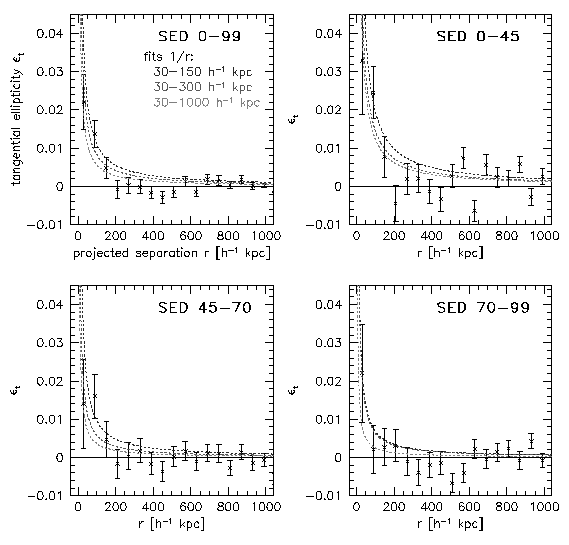Classifying
Objects by
Medium-Band
Observations
- a spectrophotometric
17-filter survey -
project: galaxy-galaxy lensing from dark haloes

Figure:
Galaxy-galaxy lensing signal measured for lens galaxies of different
SED-types (early-type galaxy have small SED-type). The fits do not use the
binned distribution shown but a much finer distribution. Used are only two fields (A901, S11). For the measurement only galaxies with redshift estimate were taken. Lens galaxies have R=18-22 and z=0.2-0.7, source galaxies have R=18-24 and z=0.8-1.5
Galaxy-galaxy lensing measures the distortion of images of background
galaxies caused by the gravitational deflection of light by foreground
galaxies. We use this deflection to constrain the mass profiles of the
dark matter halos of the lens galaxies. We find that for early-type galaxies
the deflection is stronger and can be detected to larger distances from the
centers than for late-type galaxies indicating that the halos of these
galaxies are more massive and more extended.
We model the lenses as singular isothermal spheres and use a
Tully-Fisher/Faber-Jackson relation. We find that the velocity dispersion
decreases when going outwards from the center. At distances r=30-300 kpc
the velocity dispersion of an L* galaxy is 168 km/s (146-187 km/s, 1-sigma) averaged over all galaxy types. For early-type galaxies (SED<=45) we find 194 km/s (169-215 km/s, 1-sigma).
Contact person: Martina Kleinheinrich, Bonn
Back to COMBO-17 science page
Last update Sep 20, 2002, CW
